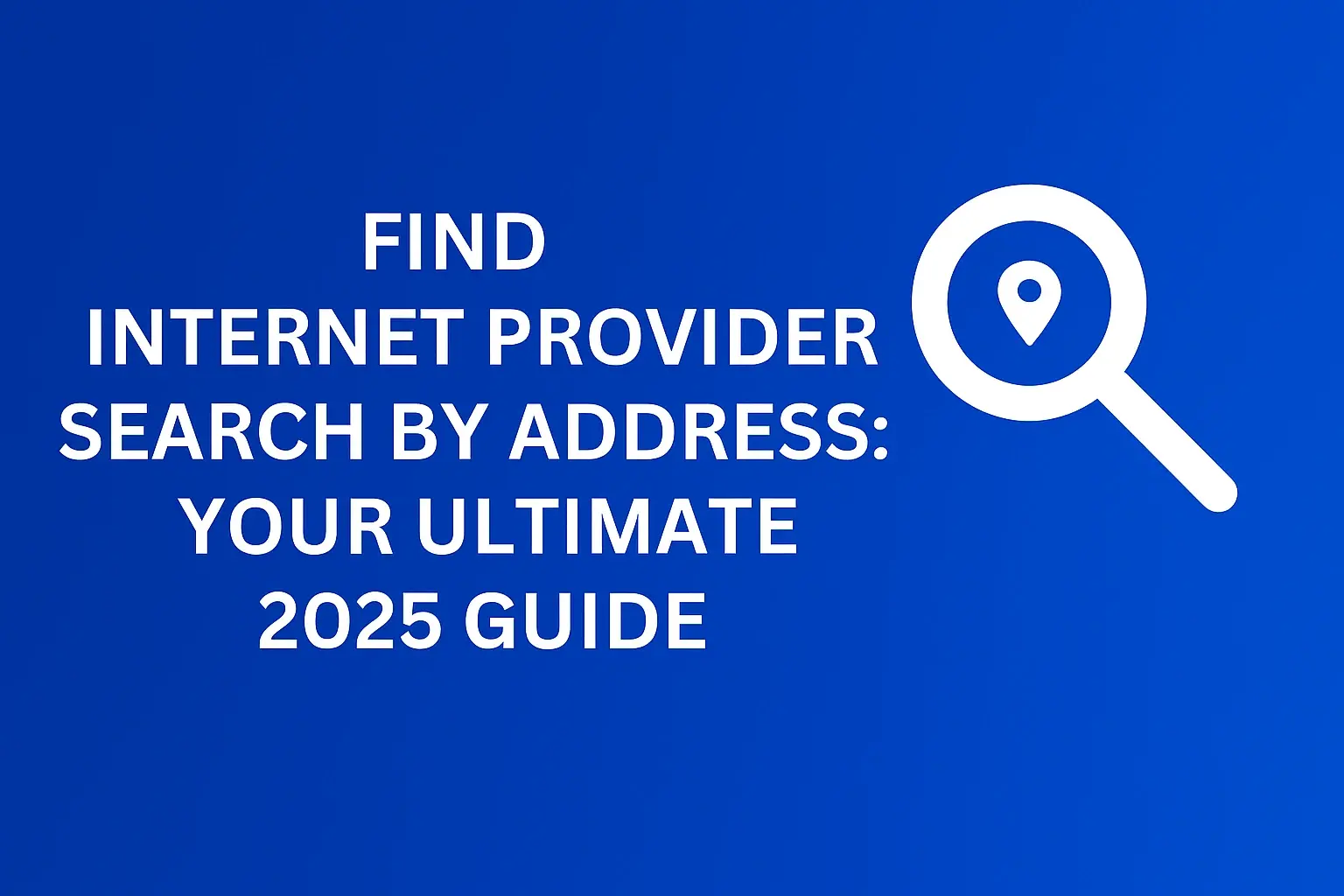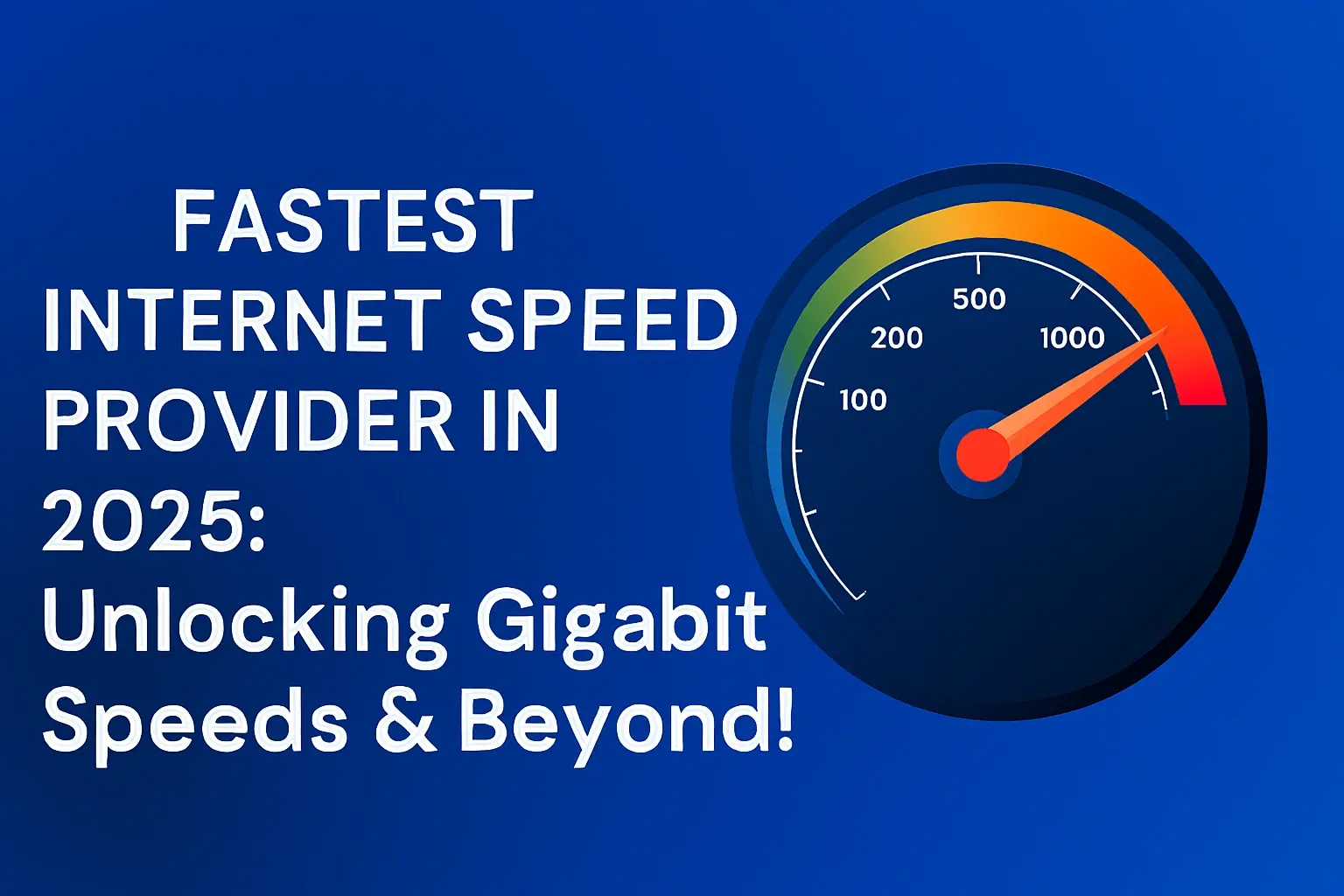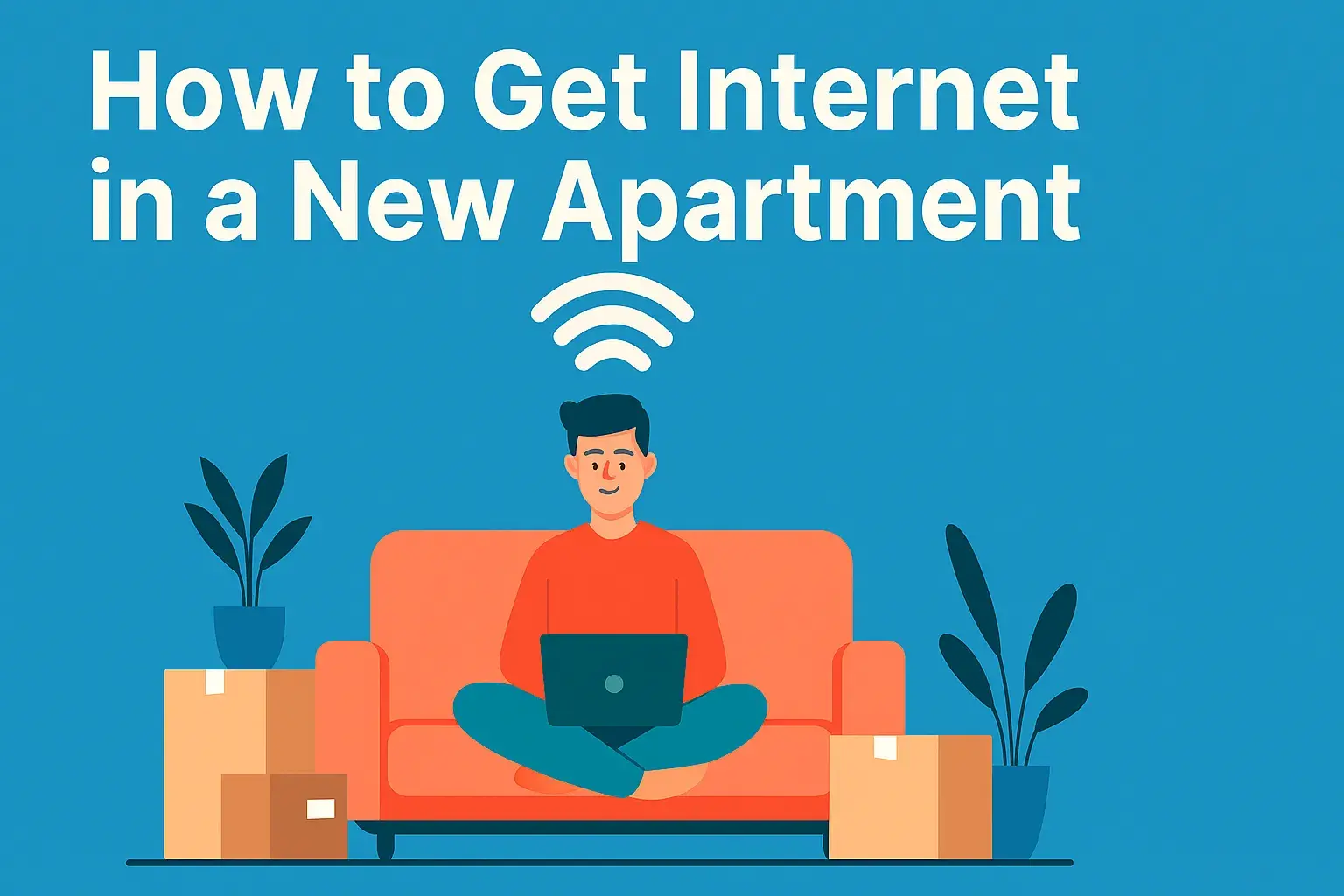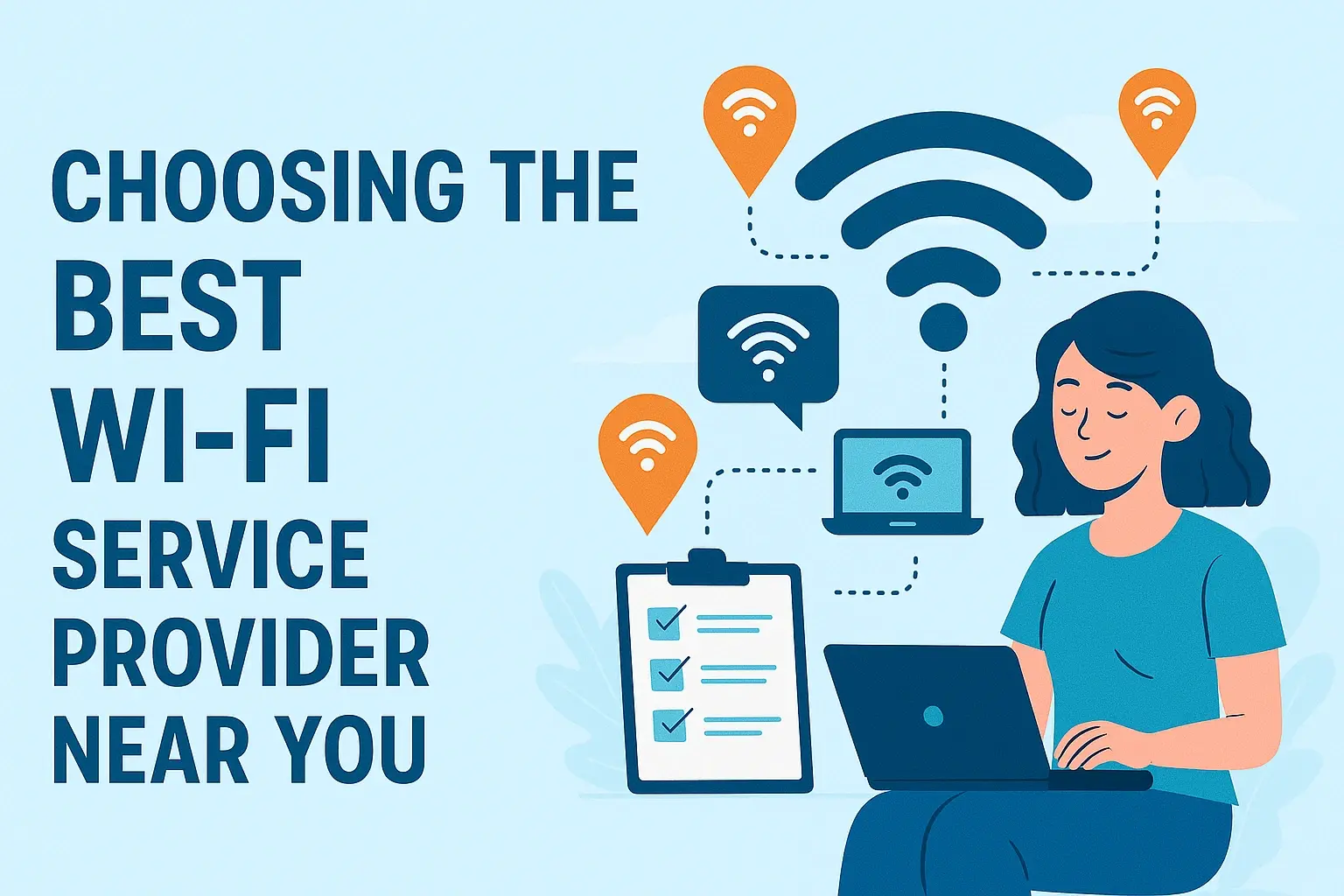Struggling with high ISP bills or limited options? This comprehensive 2025 guide reveals innovative ways to get internet without a traditional provider. Explore cellular hotspots, FWA, satellite, and DIY methods to achieve true connectivity freedom.
Introduction: The Provider-Free Frontier
In 2025, the idea of being tethered to a single internet service provider (ISP) feels increasingly outdated. Whether you're looking to escape exorbitant monthly fees, seeking more reliable service in a rural area, or simply craving greater control over your connectivity, there are more ways than ever to get online without a traditional provider. This guide will equip you with the knowledge and actionable steps to navigate the exciting world of provider-free internet access. We'll delve into the latest technologies, practical DIY solutions, and crucial considerations to ensure you find the perfect fit for your needs.
Why Go Provider-Free in 2025? The Compelling Advantages
The landscape of internet access is rapidly evolving. While traditional cable and fiber ISPs remain dominant, a growing number of individuals and businesses are exploring alternatives. Here are the primary drivers behind the shift towards provider-free internet solutions in 2025:
- Cost Savings: Eliminating monthly ISP bills can lead to significant savings. Many provider-free options, especially when leveraging existing devices or community networks, can be more budget-friendly.
- Flexibility & Mobility: Solutions like mobile hotspots offer unparalleled flexibility, allowing you to connect from virtually anywhere with cellular service. This is ideal for digital nomads, frequent travelers, or those who work remotely.
- Access in Underserved Areas: Traditional ISPs often neglect rural or remote locations due to the high cost of infrastructure deployment. Emerging technologies like Fixed Wireless Access (FWA) and advanced satellite internet are bridging this digital divide.
- Avoiding Long-Term Contracts: Many traditional ISPs lock customers into lengthy contracts with steep early termination fees. Provider-free solutions often offer more flexible, pay-as-you-go, or month-to-month options.
- Faster Deployment: Setting up some provider-free solutions, like a mobile hotspot or even FWA, can be significantly quicker than waiting for a traditional ISP to install new lines.
- Technological Innovation: The rapid advancement in 5G, satellite constellations, and wireless networking has made provider-free options more viable and performant than ever before.
Understanding How Internet Access Works (The Basics)
Before diving into provider-free methods, it's helpful to understand the fundamental ways data travels to your devices. Typically, an ISP provides a physical connection (like fiber optic cable, coaxial cable, or DSL line) to your home or business. This connection terminates at a modem, which then connects to a router (often integrated into one device) that broadcasts a Wi-Fi signal throughout your premises. Your devices connect to this Wi-Fi network.
Provider-free solutions bypass the need for a dedicated physical line from a traditional ISP. Instead, they leverage existing infrastructure like cellular towers or satellite networks to deliver internet signals wirelessly.
Key Components to Consider:
- Signal Source: This is where the internet originates (e.g., a cellular tower, a satellite in orbit).
- Receiver: Your device or a dedicated piece of hardware that captures the signal (e.g., your smartphone, a cellular modem, a satellite dish).
- Distribution: How the internet is shared within your location (e.g., Wi-Fi from a hotspot, a router connected to a fixed wireless receiver).
Cellular Hotspots: Your Pocket-Sized Gateway to Connectivity
Perhaps the most accessible and widely adopted method for getting internet without a traditional provider is by using a cellular hotspot. This leverages the power of mobile networks (4G LTE and the increasingly prevalent 5G) to create a Wi-Fi network.
Types of Cellular Hotspots:
- Smartphone Hotspot (Tethering): Most modern smartphones allow you to share their cellular data connection with other devices. This is often referred to as "tethering."
- Dedicated Mobile Hotspot Devices (MiFi): These are portable, battery-powered devices specifically designed to create a Wi-Fi network from a cellular signal. They typically offer better battery life and can connect more devices than a smartphone hotspot.
- Cellular Routers: These are more robust devices that use a cellular modem to connect to the internet and then broadcast a Wi-Fi signal, often with Ethernet ports for wired connections. They are suitable for homes or small offices.
How it Works:
You'll need a SIM card with a data plan. This can be from your existing mobile carrier (check their terms for hotspot usage) or a dedicated mobile virtual network operator (MVNO) that specializes in data plans. The device then acts as a portable router, broadcasting a Wi-Fi signal that other devices can connect to.
Pros:
- High Portability: Connect anywhere with cellular service.
- Quick Setup: Usually just a matter of turning on the feature or device.
- Versatile: Can be used for work, entertainment, and general browsing.
Cons:
- Data Caps & Throttling: Most plans have data limits, and exceeding them can lead to slower speeds or extra charges.
- Potential for High Costs: Unlimited data plans can be expensive.
- Signal Strength Dependency: Performance is directly tied to the cellular network's coverage and signal strength in your area.
- Battery Drain: Using your phone as a hotspot can quickly drain its battery.
2025 Considerations:
With the widespread rollout of 5G, cellular hotspots are becoming significantly faster and more capable. Look for plans and devices that support 5G for optimal performance. Some carriers are now offering "unlimited" 5G home internet plans that function similarly to a cellular hotspot but are intended for stationary use.
Fixed Wireless Access (FWA): Bridging the Gap with Wireless Broadband
Fixed Wireless Access (FWA) is a technology that delivers broadband internet wirelessly to a fixed location, such as a home or business. Unlike mobile hotspots, FWA typically uses dedicated antennas installed at your property to receive a signal from a nearby base station or tower. It's a strong contender for those seeking an alternative to traditional wired broadband, especially in suburban and rural areas.
How FWA Works:
An outdoor antenna is mounted on your roof or a pole, pointed towards the nearest FWA provider's tower. This antenna receives the internet signal and transmits it to an indoor router via Ethernet cable, which then distributes the internet via Wi-Fi.
Types of FWA:
- Point-to-Point (PTP): Connects two fixed locations, often used for businesses or connecting multiple buildings.
- Point-to-Multipoint (PTMP): A base station transmits to multiple customer premises in a service area. This is the most common type for residential FWA.
- 5G FWA: Leverages the high speeds and low latency of 5G networks to provide broadband-like performance. Major carriers like T-Mobile and Verizon are heavily investing in this.
Pros:
- Faster Speeds than DSL: Often provides speeds comparable to cable internet.
- Quicker Installation: Typically faster to set up than laying new fiber or cable lines.
- Good for Rural Areas: Can reach locations where wired infrastructure is absent.
- Potentially Lower Latency: Especially with 5G FWA, latency can be significantly better than satellite.
Cons:
- Line-of-Sight Requirements: Performance can be affected by obstructions like trees or buildings between the antenna and the tower.
- Data Caps: While improving, some FWA plans still have data limits.
- Provider Availability: Service is dependent on the FWA provider's network coverage in your specific area.
2025 Trends:
5G FWA is the major growth area in 2025. Carriers are actively expanding their 5G networks, making FWA a viable and often superior alternative to traditional broadband for many users. Providers are also offering more competitive pricing and higher data allowances.
| Feature | Traditional Cable/Fiber | Fixed Wireless Access (FWA) | Cellular Hotspot |
|---|---|---|---|
| Typical Speeds | 50 Mbps - 1 Gbps+ | 25 Mbps - 1 Gbps+ (5G FWA) | 10 Mbps - 500 Mbps (4G/5G) |
| Installation Complexity | High (requires physical line) | Medium (outdoor antenna) | Low (device setup) |
| Portability | None | None (fixed location) | High |
| Data Caps | Less common for wired, more for fixed wireless | Varies, improving | Common, but "unlimited" plans exist |
| Best For | Urban/Suburban, stable high speeds | Suburban/Rural, alternative to wired | Mobile users, temporary needs, backup |
Satellite Internet: Reaching the Unreachable with Space-Based Connectivity
For those in the most remote locations where cellular and FWA signals simply don't reach, satellite internet remains a crucial option. While historically plagued by high latency and slow speeds, new Low Earth Orbit (LEO) satellite constellations are revolutionizing this space.
How Satellite Internet Works:
A satellite dish installed at your location communicates with satellites orbiting the Earth. These satellites then relay the internet signal to and from ground stations connected to the wider internet backbone.
Types of Satellite Internet:
- Geostationary (GEO) Satellite: These satellites orbit very high above the Earth (approx. 22,000 miles). They offer wide coverage but suffer from significant latency (delay) due to the vast distance the signal must travel. Providers include Viasat and HughesNet.
- Low Earth Orbit (LEO) Satellite: These satellites orbit much closer to Earth (a few hundred miles). This drastically reduces latency, making them suitable for more interactive uses like video conferencing and online gaming. Starlink (by SpaceX) is the leading example in 2025.
Pros:
- Global Coverage: Can provide internet access almost anywhere on Earth.
- Ideal for Remote Areas: The only viable option for many off-grid locations.
- Improved Speeds (LEO): LEO services offer speeds and latency comparable to some terrestrial broadband.
Cons:
- High Latency (GEO): Significant delay makes real-time applications difficult.
- Weather Sensitivity: Heavy rain, snow, or fog can temporarily degrade signal quality.
- Higher Costs: Equipment and monthly service can be more expensive.
- Data Caps: Often come with strict data limits, though LEO services are improving this.
- Obstructions: Requires a clear, unobstructed view of the sky.
2025 Advancements:
Starlink continues to expand its LEO constellation, offering significantly better performance than traditional GEO satellites. Many users are finding Starlink to be a game-changer for rural internet. Pricing and plan structures are becoming more competitive, and service is becoming more widely available.
DIY Solutions for the Savvy: Advanced Users and Community Networks
For the technically inclined, there are more advanced and often community-driven ways to access the internet without a traditional provider. These methods require a deeper understanding of networking and may involve more hands-on setup.
1. Mesh Networks and Long-Range Wi-Fi Extenders:
If a neighbor or a nearby business has a strong internet connection, you might be able to extend it to your property using high-gain antennas and directional Wi-Fi equipment. This is often referred to as "wireless bridging" or "long-range Wi-Fi."
- How it Works: Two directional antennas are used – one at the source (with permission) and one at your location – to create a point-to-point wireless link.
- Considerations: Requires technical expertise, line-of-sight, and, most importantly, the explicit permission of the internet provider or owner of the source connection.
2. Community Wi-Fi Networks:
Some communities are banding together to create their own shared internet infrastructure. This can involve pooling resources to subscribe to a business-grade internet connection and then distributing it wirelessly or through a local mesh network.
- How it Works: A group of users shares the cost and management of an internet connection, often using specialized routers and mesh technology.
- Considerations: Requires strong community organization, technical leadership, and adherence to terms of service for any commercial internet subscriptions.
3. Utilizing Public Wi-Fi (with Caution):
While not a permanent solution, strategically using public Wi-Fi hotspots (libraries, cafes, community centers) can provide temporary internet access.
- How it Works: Connect to open or password-protected Wi-Fi networks offered by public institutions or businesses.
- Crucial Security Note: Never conduct sensitive transactions (banking, shopping with credit cards) on public Wi-Fi without using a Virtual Private Network (VPN). Public networks are often unsecured and vulnerable to eavesdropping.
Legal and Ethical Considerations: Staying on the Right Side of Connectivity
While exploring provider-free options, it's crucial to be aware of the legal and ethical boundaries. Missteps here can lead to service termination, fines, or even legal action.
- Terms of Service (ToS): Always read and understand the ToS of any mobile carrier or internet provider whose service you are using, especially concerning hotspot usage or sharing. Many "unlimited" mobile plans have clauses restricting heavy hotspot usage or designating it for personal devices only.
- Permission is Paramount: If you are leveraging a connection from a neighbor or a business, you MUST have their explicit permission. Unauthorized access is illegal (often considered a form of hacking or theft of service).
- Data Usage Policies: Be mindful of data caps and fair usage policies. Exceeding these can result in throttling (slowed speeds) or additional charges, even with "unlimited" plans.
- Reselling Internet: In most residential service agreements, reselling internet access to others is prohibited. Community networks need to be structured carefully to comply with provider terms.
- Spectrum Usage: While less common for typical users, be aware that certain wireless technologies operate on licensed or unlicensed spectrum. Ensure your equipment complies with regulations.
The goal is to find legitimate and sustainable ways to access the internet. Focus on solutions that are transparent, permitted by service providers, and ethically sound.
Choosing the Right Provider-Free Solution for You
Selecting the best provider-free internet option depends heavily on your specific circumstances, location, and needs. Here’s a decision-making framework:
1. Assess Your Location:
- Urban/Suburban: You likely have good cellular coverage and potentially access to 5G FWA. Mobile hotspots are also highly viable.
- Rural/Remote: Cellular coverage might be spotty. FWA could be an option if towers are within range. LEO satellite internet (like Starlink) is often the most reliable choice.
- Extremely Remote/Off-Grid: LEO satellite is likely your only high-speed option.
2. Determine Your Data Needs:
- Light User (Email, Browsing): A basic smartphone hotspot plan or a lower-tier FWA plan might suffice.
- Moderate User (Streaming, Video Calls): You'll need a plan with a substantial data allowance or an "unlimited" option. 5G FWA or LEO satellite are good candidates.
- Heavy User (Large Downloads, Multiple Streamers): Look for truly unlimited plans, business-grade FWA, or potentially a community network solution.
3. Consider Your Budget:
- Budget-Conscious: Leveraging your existing smartphone hotspot (if allowed) or finding affordable MVNO data plans might be best.
- Moderate Budget: Dedicated mobile hotspots or standard FWA plans offer a good balance.
- Higher Budget: LEO satellite or premium FWA plans provide the best performance but come at a higher cost.
4. Evaluate Required Performance:
- Basic Connectivity: Any working solution will do.
- Smooth Streaming & Video Calls: Requires decent speeds and lower latency. 5G FWA and LEO satellite excel here.
- Online Gaming: Low latency is critical. 5G FWA is generally superior to satellite for gaming.
By carefully considering these factors, you can narrow down the options and make an informed decision that best suits your internet needs without a traditional provider.
The Future of Internet Access: What's Next in Provider-Free Connectivity?
The trend towards decentralized and alternative internet access is only set to accelerate. In the coming years, we can expect:
- Ubiquitous 5G FWA: As 5G networks mature, 5G FWA will become an even more compelling and widespread alternative to cable and fiber, especially in underserved areas.
- LEO Satellite Expansion: More LEO satellite constellations are planned, potentially increasing competition, driving down prices, and improving service globally.
- Wi-Fi 7 and Beyond: Newer Wi-Fi standards will offer faster speeds and better capacity for distributing internet within homes and businesses, making wireless solutions more robust.
- Community-Driven Networks: We may see a rise in more sophisticated community-owned or operated networks, especially in areas with poor traditional ISP service.
- Integration of Technologies: Hybrid solutions, perhaps combining cellular and satellite for optimal performance, could become more common.
The future of internet access is looking more diverse, flexible, and user-centric, offering more choices than ever before.






